Why Are Arabica and Robusta Coffee Beans So Popular?
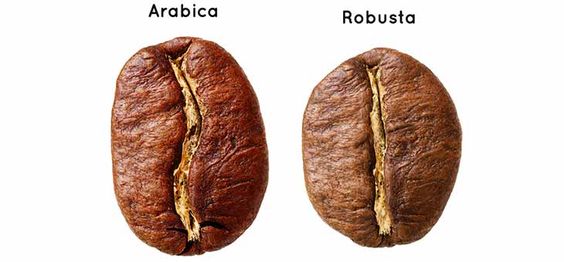
Arabica and Robusta, two familiar types of beans in the coffee world, always bring people the experience of sitting in a cozy café in the heart of a bustling city, enjoying a mesmerizing cup of coffee and feeling alive. And surely you've wondered which bean creates such a wonderful flavor, haven't you? In this article, I will guide you to explore Arabica and Robusta beans first, as they are always present in your coffee cup, sometimes without you even realizing it.

Mục lục
Characteristics of Arabica and Robusta Coffee Beans
Arabica Beans originate from Ethiopia and are typically cultivated in high-altitude regions such as Costa Rica, Colombia, and Brazil. These coffee plants thrive in cool climates at elevations ranging from 600 to 2000 meters above sea level. Arabica is distinguished by its rich, smooth flavor profile, which is generally less bitter compared to Robusta. Particularly noteworthy is its complex aroma, often hinting at delicate fruity notes like citrus or berries.
Robusta Beans have their origins in lowland regions of Central and Western Africa, including countries like Uganda and Madagascar. Robusta plants are resilient to hot and humid climates, thriving at elevations from sea level to 800 meters. Robusta is known for its strong, bold flavor with a pronounced bitterness. Occasionally, it may exhibit hints of chocolate in its flavor profile. Robusta beans contain a higher caffeine content than Arabica, providing a robust and energizing coffee experience.
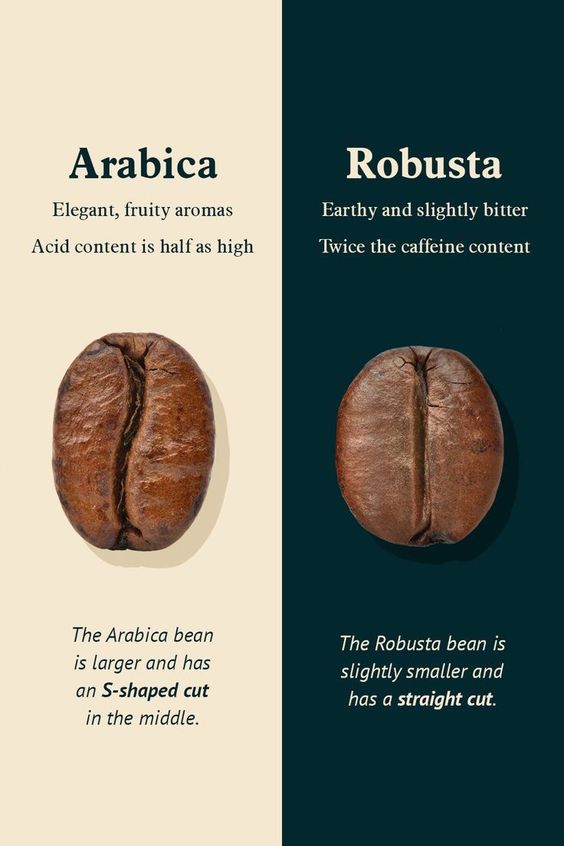
Reasons why Arabica beans are popular
The flavor and quality of Arabica are the most important factors. Arabica beans provide a rich aroma, mild, sophisticated flavor, and low bitterness, making them suitable for specialty and premium coffees. The pleasant acidity of Arabica also adds to the diversity of the flavor experience. These characteristics make Arabica stand out and be loved by coffee connoisseurs worldwide.
The market and applications for Arabica are vast, especially in high-end coffee shops and specialty coffee products. Arabica accounts for a large portion of the export coffee market, particularly in Western countries, where consumers prefer high quality and unique flavors. Famous coffee brands often use Arabica to create distinctive products and attract customers.
Arabica beans are not only used in traditional coffee brewing but are also the main ingredient in premium instant coffee products, coffee capsules, and ground coffee. The versatility and flexibility of Arabica have made this type of coffee a popular and indispensable choice in the coffee industry.
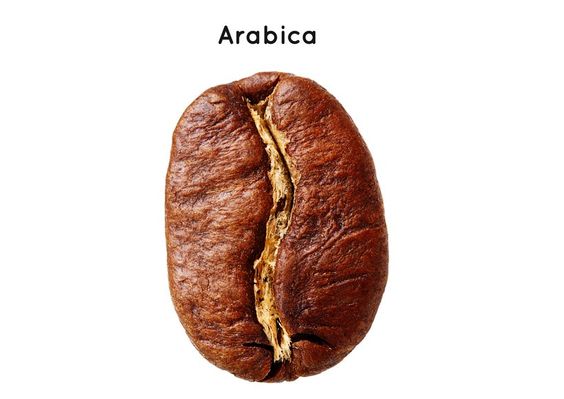
Reasons why Robusta beans are popular
The flavor and quality of Robusta also have their own allure, with a strong, robust taste and a distinctive bitterness. Its higher caffeine content not only provides a stimulating effect but also enhances the boldness of the coffee.
Robusta is easier to cultivate compared to Arabica. It thrives in harsh conditions and is less susceptible to pests and diseases, resulting in higher yields and lower production costs. This makes Robusta a more economical choice for many farmers.
The market and applications for Robusta are widespread, especially in instant coffee products and traditional Vietnamese-style drip coffee. Robusta is also a primary ingredient in industrial and mass-market coffee products, thanks to its affordability and bold flavor profile.
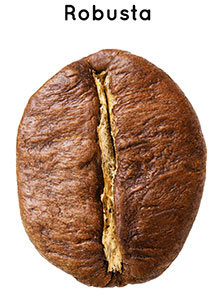
Comparison between Arabica and Robusta
Flavor Profile
Arabica: Known for its complex flavor profile with varying notes of fruit, floral, and sometimes nutty or chocolaty undertones. Arabica beans generally offer a smoother, sweeter taste with mild acidity and less bitterness.
Robusta: Characterized by a stronger, harsher flavor profile with grainy or nutty notes and a distinct bitterness. Robusta beans have a heavier mouthfeel and are often described as having an earthy or woody taste.
Caffeine Content
Arabica: Typically contains lower levels of caffeine compared to Robusta, ranging from 1.2% to 1.5%. Arabica provides a moderate caffeine boost.
Robusta: Higher in caffeine content, ranging from 2.2% to 2.7%. The higher caffeine levels contribute to Robusta's bitter taste and stronger stimulant effect.
Growing Conditions
Arabica: Thrives in higher altitudes (600-2000 meters) with cooler temperatures and consistent rainfall. It is more vulnerable to pests and diseases, requiring careful cultivation.
Robusta: Grows well in lower altitudes, typically below 800 meters, and tolerates warmer temperatures. It is more resilient to pests and diseases, making it easier and less costly to grow.
Market and Use
Arabica: Preferred for its superior flavor and used widely in specialty and gourmet coffees. It is often used in espresso blends and single-origin coffees.
Robusta: Commonly used in instant coffee, espresso blends (to enhance crema), and as a filler in lower-grade coffee blends. Robusta's affordability and caffeine content make it popular in mass-market coffee products.
Global Production
Arabica: Dominates coffee production in regions like Latin America, Africa, and parts of Asia. It is highly valued in Western markets for its quality and diverse flavors.
Robusta: Widely cultivated in countries like Vietnam, Brazil, and parts of Africa and Southeast Asia. Robusta production exceeds that of Arabica due to its resilience and higher yields.
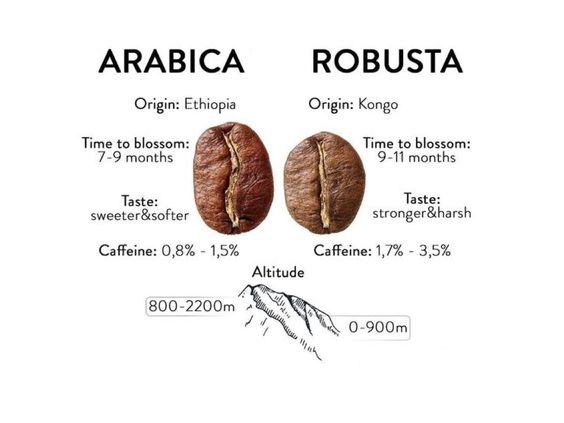
Both types of beans play pivotal roles in the coffee industry, catering to a wide range of consumer preferences and market needs. Arabica dominates in regions such as Latin America, Africa, and parts of Asia where it is cultivated at higher altitudes. In contrast, Robusta is extensively grown in countries like Vietnam, Brazil, and parts of Africa and Southeast Asia, contributing significantly to global coffee production.
